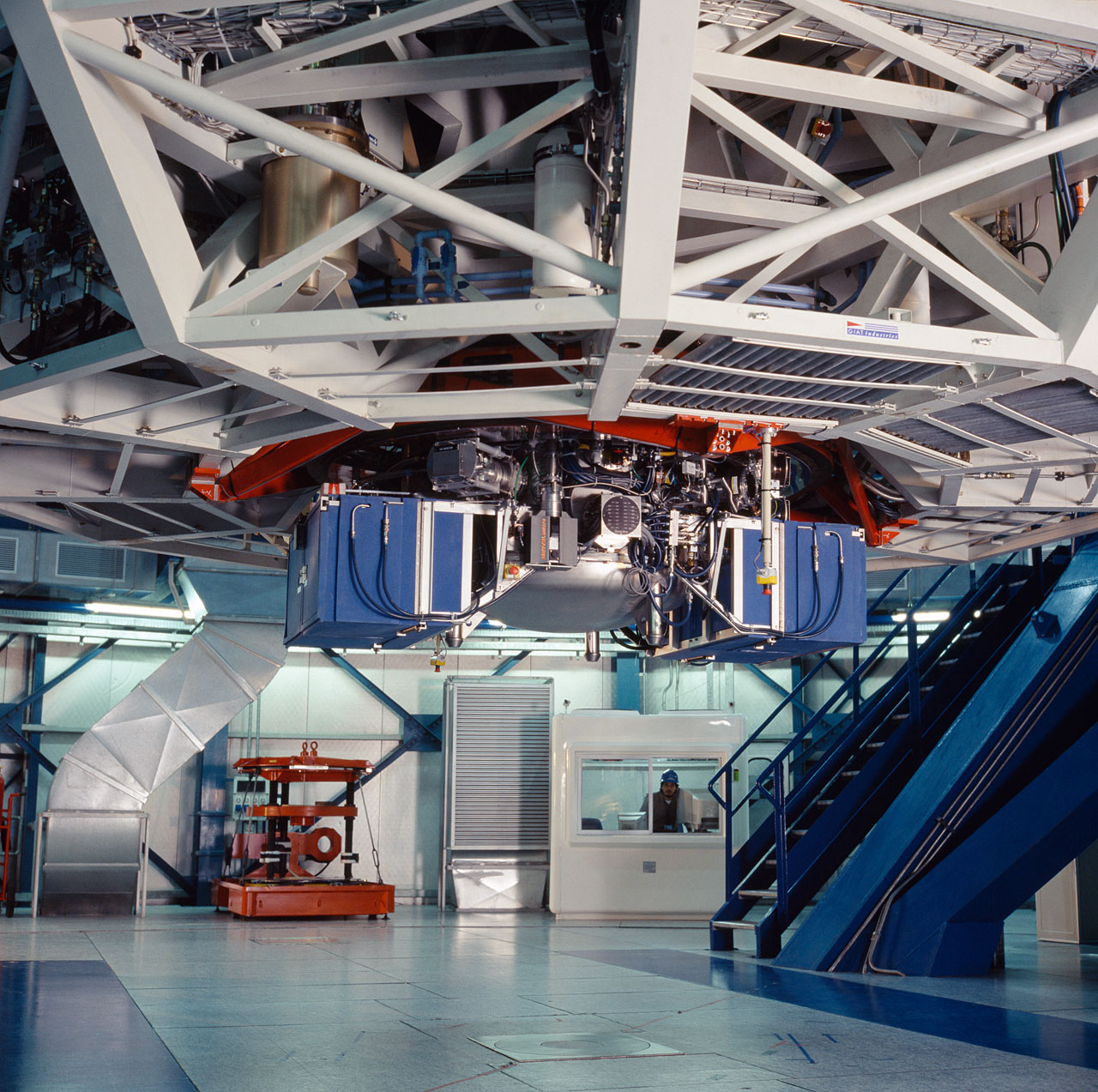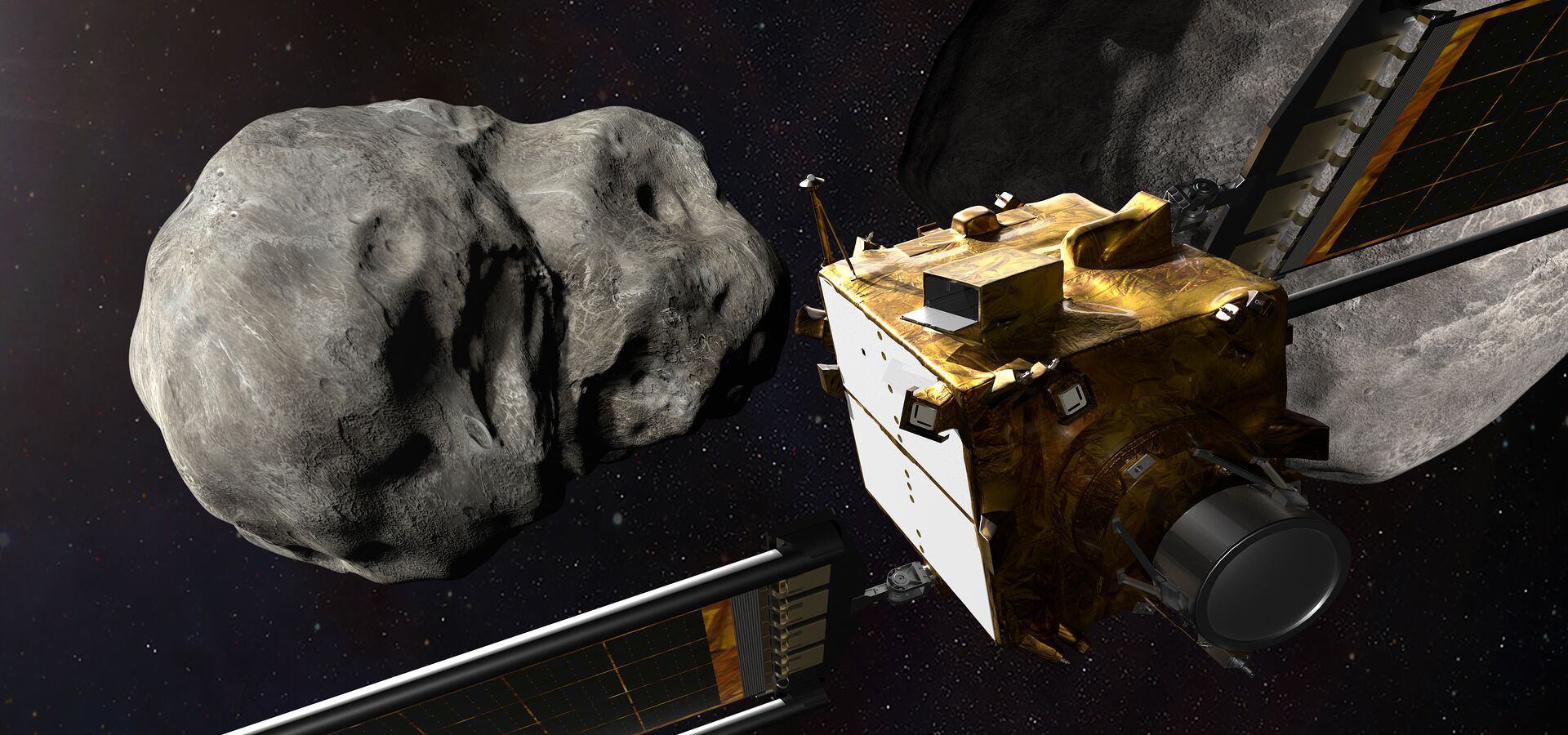
The VLT will be watching as DART impacts an asteroid
Meet the scientists who will do the observations
- Why we want to study asteroids
- How the VLT will contribute to NASA’s planetary deference mission DART
- The astronomers that will observe the asteroid and its dusty plume
With movies like Armageddon and Don’t Look Up, the idea of Earth-threatening asteroids is no stranger to us. But what would we do if we discovered one of these boulders on a trajectory towards Earth? As a test, NASA has sent a probe into space, the Double Asteroid Redirection Test (DART), to try to nudge a – non-threatening – asteroid off its path. Four astronomers will seize this great opportunity and use ESO’s Very Large Telescope (VLT) to study the asteroid before and after the impact, scheduled for 26 September at 23:14 UTC.

Following DART from the ground
DART is a NASA mission, the first of its kind to attempt shifting an asteroid from its path for planetary defence purposes. Just as the name of the mission implies, DART consists of a spacecraft that will plunge into an asteroid, and hopefully make an impact strong enough to change its path. But don’t worry, this asteroid does not pose a threat to Earth. The DART mission is a test of technology to respond to a potential asteroid impact threat, should one ever be discovered.
Launched on the 23rd of November in 2021, DART will have travelled for over 10 months to get to its destination: the asteroid Dimorphos. This rock is 160 metres across and orbits the larger asteroid Didymos. But why aim at a binary asteroid? Well, if Dimorphos was travelling on its own it would be very hard to track changes in its orbit after being nudged by DART. But since it orbits a larger asteroid, we can use it as a clock. “You've got the small asteroid passing in front of the big one and then the other way around,” says Cyrielle Opitom, a researcher at the University of Edinburgh, UK, and member of the DART mission science team. “Due to that we are going to observe dips in the light reflected from the big asteroid, letting us calculate how much the orbital period of the smaller one has changed after the impact.”
Ground-based observations will be key to the success of the mission and observing time has been granted on several ESO telescopes to take advantage of this unique opportunity. The goal is not only to measure how much the orbit of Dimorphos changes, but also to understand its composition and internal structure. As a result of the impact, dust and rocky material from the asteroid will be blown away from its surface. This plume of material will carry important information about the asteroid and its properties.
Four planetary scientists will use all four Unit Telescopes (UT’s) of the VLT at ESO’s Paranal Observatory in Chile and their diverse fleet of instruments in a coordinated effort to observe the plume and the surface of the asteroid. Their hope is to seize the opportunity of studying an impact as it happens, and to obtain clues to the history of the Solar System.
Why do we want to study asteroids?
“Impacts between asteroids happen naturally,” says Opitom, “but you never know it in advance, meaning you don't know the initial conditions, like the mass of whatever is going to impact your asteroid. DART is a really great opportunity to study a controlled impact, almost as in a laboratory.”
What can we learn from this experiment? “Asteroids are very interesting because they more or less haven’t changed in composition or shape since they formed,” explains Julia de León, a planetary scientist at the Institute of Astrophysics in the Canary Islands, Spain. “So they are leftovers of the very early stages of the formation of the planets in our Solar System. Studying them can tell us very valuable information about our own origins, even how Earth formed and whether asteroids carried water to Earth, key questions for humanity.”
“This is the first time that an asteroid can be observed both before and after a known impact event,” says Simon Green, who is a Professor of Planetary and Space Sciences at the Open University in the UK. He has been involved in asteroid research since the start of his PhD studies in 1981, and besides discovering several asteroids and comets, has participated in the DART mission from its very beginning. “The DART mission will therefore give scientists an interesting opportunity to peer beneath the surface of an asteroid and disclose their real nature,” concludes Stefano Bagnulo, staff astronomer at the Armagh Observatory and Planetarium in the UK.
Cloudy with a chance of solar wind
As near-Earth asteroids move through the Solar System their surfaces are exposed to impacts from tiny meteorites and to the solar wind, especially as they approach the Sun. Because this causes erosion, or “space weathering”, an asteroid’s surface doesn’t necessarily tell us how it formed. The DART impact is expected to eject pristine material lying below Dimorphos weathered crust, opening a window to this asteroid’s past.
De León will be using the instrument X-shooter on UT3 to study the effect of space weathering on Dimorphos. “X-shooter is a very efficient instrument to obtain spectra over a wide wavelength range,” she says. “This is very unique and allows us to get information spanning from the near ultraviolet to the near infrared, all at once in a single shot.” With rapidly evolving objects like this asteroid, obtaining so much information with a single instrument is invaluable.
What she is really hoping for is that DART manages to get a lot of material off the asteroid. “Then we will directly observe surface material which has been affected by space weathering. If we separately can observe the ejecta and then the main body, we will be able to compare the differences. It will be very challenging, but with the VLT it can be possible!”, she says.
|

Julia de León.
Credit: J. de León. This image isn´t released under our CC-BY license.
|
|
Coordinating the observations
Both Opitom and de León will be on site at Paranal during the night of the DART impact, an adventure they both look forward to. “It’s an honour to be one of the scientists to actually go to Paranal for the observations,” says de León. “Since it will be my first time at Paranal, I have to say I’m extremely excited about it.” She will be in good hands, thanks to both ESO’s staff on site and Opitom herself, who was an ESO Fellow and has experience coordinating simultaneous observations with different telescopes.
Opitom will be observing with the Multi Unit Spectroscopic Explorer (MUSE) instrument at UT4, a telescope equipped with a laser assisted adaptive optic system. The lasers are used to create artificial stars in the night sky, key for correcting atmospheric turbulence and obtaining sharp images.
One of the things she hopes to study from the asteroid impact is the motion of the ejecta as it expands and moves away from the asteroid. “MUSE is a really great instrument for this,” she says, “because it has two fields of view with different sizes.” The small field of view will allow the team to study the ejecta in great detail very close to the asteroid, and they’ll use the larger field once the ejecta has expanded more.
She explains that thanks to the laser adaptive optics MUSE has a similar spatial resolution to the Hubble space telescope, which will observe the plumes as well. But MUSE has the advantage of taking images at thousands of different wavelengths simultaneously, which contains information about the composition and size distribution of the dust.
“Once the ejecta expands beyond the narrow field we're going to switch to the wide field mode and keep observing it whilst it expands,” she continues. “This is why MUSE is really great, because we're getting the spectral information and we also have the resolution to follow it when it's both really close to the nucleus and as it expands.”
|
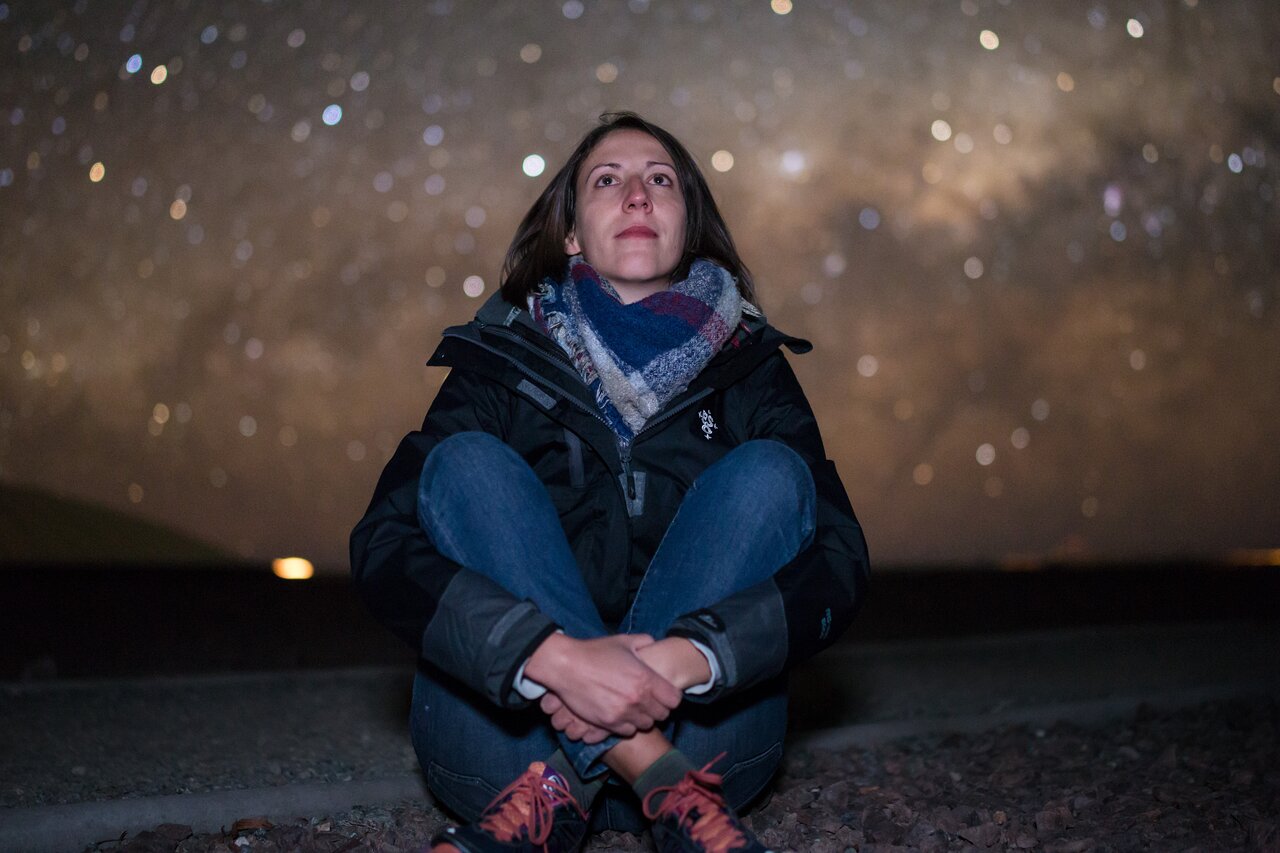
Cyrielle Opitom at ESO’s Paranal Observatory.
Credit: C. Opitom, J. C. Muñoz-Mateos. This image isn´t released under our CC-BY license.
|
|
Having both de León and Opitom on site will be key, since their observations have a high risk of interfering with each other. Why? Because the wavelength range covered by X-shooter overlaps with the wavelength of the lasers used by MUSE, meaning any data captured with X-shooter whilst the lasers are on would be contaminated with laser light.
“It's going to require coordination to know when to observe with which instrument,” says Opitom. “We are really trying to make everything fit together and get the best observations possible. It's going to be intense and a lot of figuring out as we go. But we’re going to get great data, absolutely incredible data.”
Capturing the heat from an asteroid
Remotely, Green will lead the observations done with VISIR (VLT Imager and Spectrometer for mid-Infrared), a thermal infrared instrument on the UT2. The aim is to study the temperature of the asteroid, something that proves to be a bit of a challenge because our atmosphere is somewhat bright at mid-infrared wavelengths.
“The surface temperature of the asteroid is comparable to room temperature,” Green says. “Hence, observing it from Earth at these wavelengths is equivalent to trying to see visible stars in the daytime!” Moreover, these observations will nicely complement those done with the other Unit Telescopes. “The thermal-infrared VISIR instrument is more sensitive to larger particles in ejecta, whereas the visible light instruments preferentially see scattered light from small dust particles.”
By measuring the thermal radiation from the asteroid, he hopes to put better constraints on its size and reflectivity and determine how well it retains heat, which gives insights into the structure of its surface. “These properties are important not just because we wish to know the nature of the asteroid’s surface, but because they affect its dynamical and physical evolution.” This is because when photons –– particles of light –– are reflected or emitted by an object, they produce a tiny force called radiation pressure; in the case of asteroids, this slowly changes their trajectory. “This can critically affect the potential for terrestrial impacts and must be taken into account when future predictions are made,” explains Green.
|
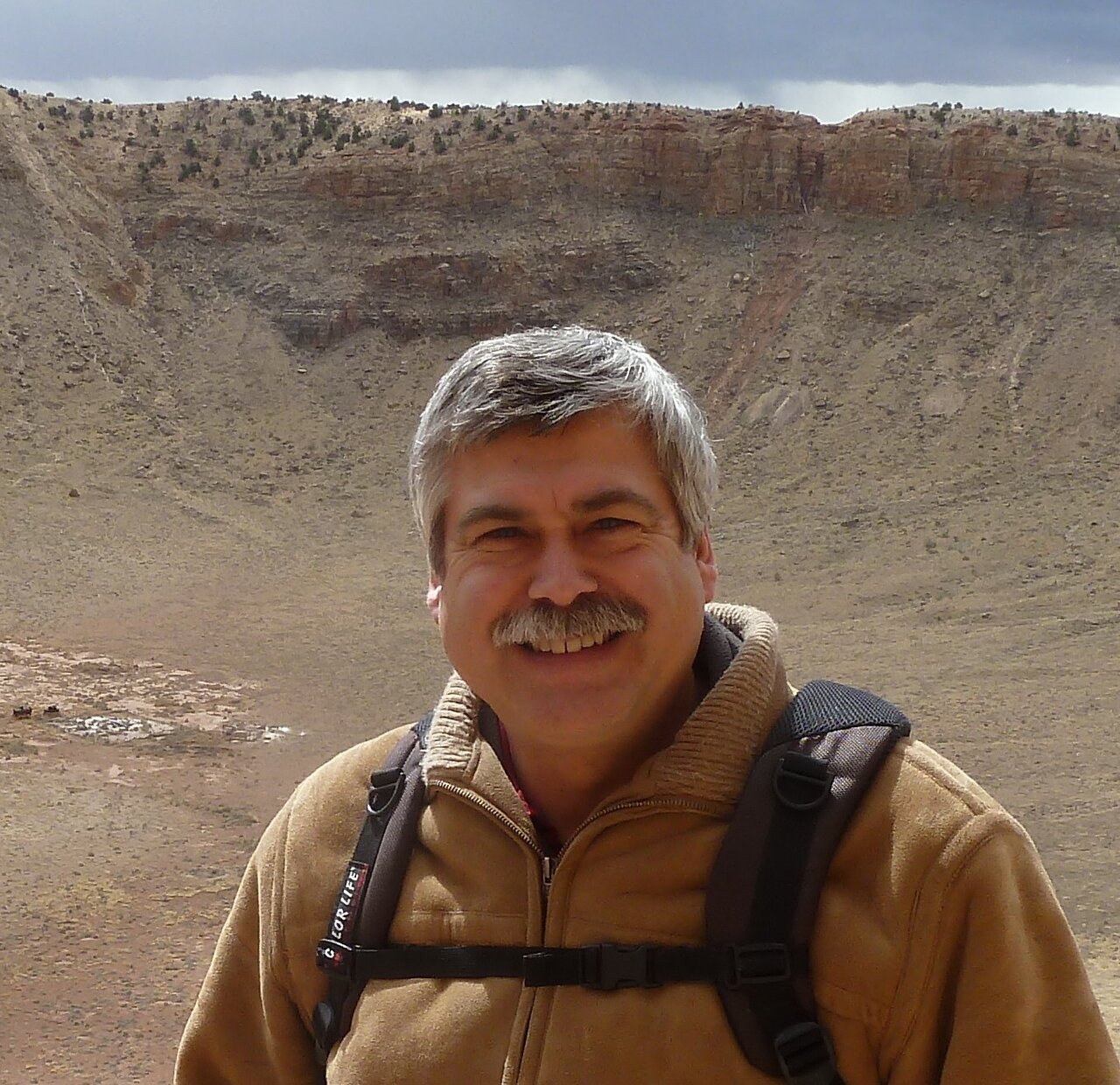
Simon Green.
Credit: S. Green. This image isn´t released under our CC-BY license.
|
|
Secrets hidden in the reflected light
Finally, Bagnulo will study the asteroid’s polarised light using FORS (FOcal Reducer and low dispersion Spectrograph), an instrument on UT1 that he knows well from his time as an ESO staff astronomer some years ago.
Polarisation is a property of light related to the orientation of the light waves. Bagnulo explains that this is a phenomenon that is experienced in everyday life, for instance when we look at the sea using polarised sunglasses. The light reflected by the sea is polarised, and polarised sunglasses filter out that component, such that the reflections disappear.
“When we observe the bodies in our Solar System, we are looking at the sunlight that is scattered by their surface or by their atmosphere, which becomes partially polarised,” he explains. “We are interested in the fraction of light that is polarised, which contains information about the reflecting surface of the asteroid. In particular, tracking how the polarisation changes with the orientation of the asteroid relative to us and the Sun reveals the structure and composition of its surface. This gives us clues about where and how it was formed in the Solar System”.
The changes in polarisation they will be looking for are expected to be very small, meaning they need incredibly precise measurements. “FORS, mounted on the VLT, is the only polarimeter available at a large telescope capable of collecting enough light to carry out this kind of analysis,” Bagnulo says.
|

Stefano Bagnulo at Armagh Observatory.
Credit: S. Bagnulo. This image isn´t released under our CC-BY license.
|
|
The collaborative effort
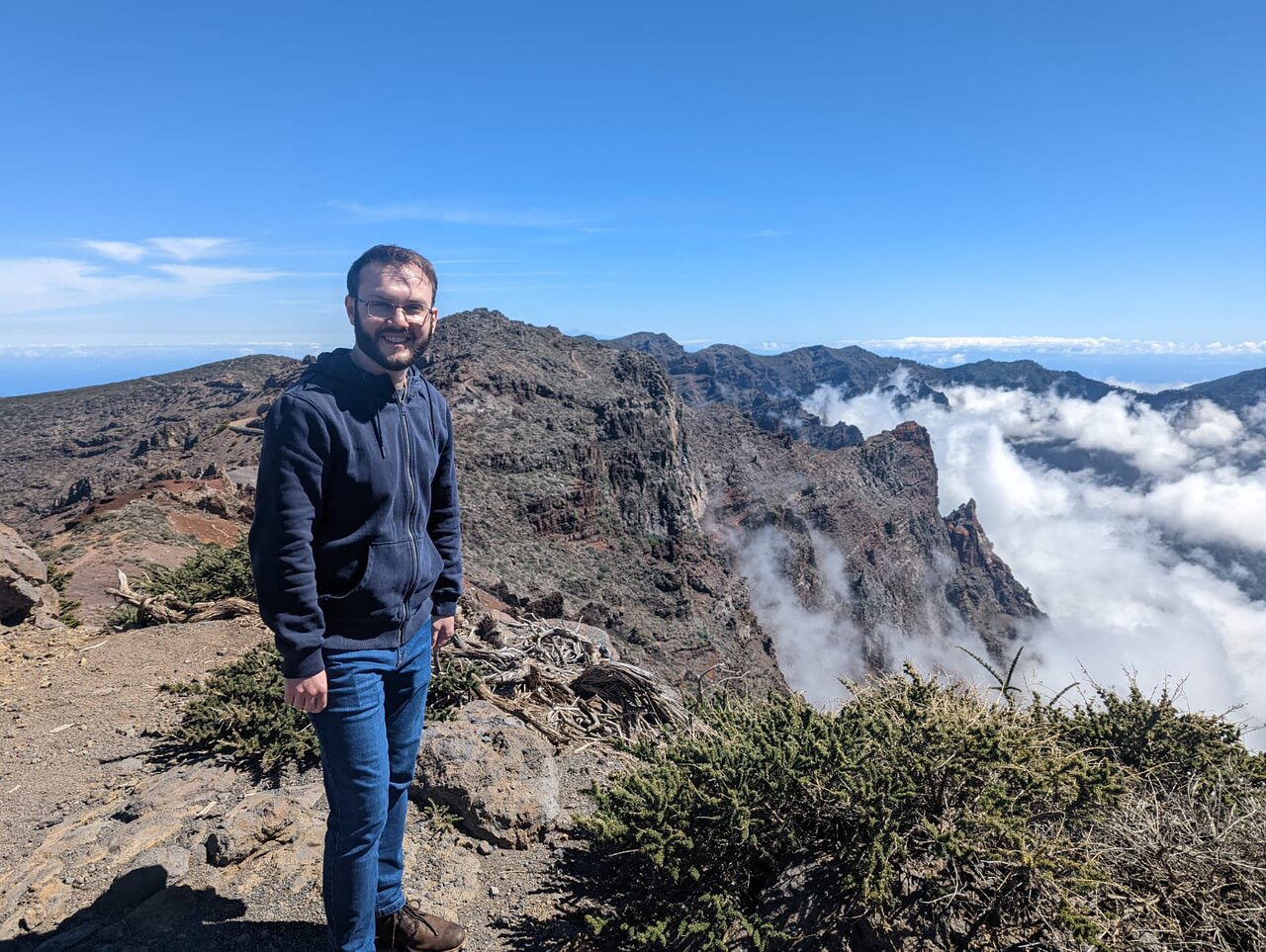
At the time of the impact, the Didymos system will be at its closest to Earth, but still a whopping 11 million kilometres away, and impossible to spot with the naked eye. The 8.2-metre mirrors of the VLT Unit Telescopes and the pristine skies at ESO’s Paranal Observatory will be key to capture the faint light of the asteroid and the dusty plume ejected by the impact.
“This is a very well coordinated campaign,” says de León. “I also want to thank the time allocation committee at ESO, because they really understood the value of both the mission and the great importance of using the four VLT telescopes for the observations.”
Equally excited as de León to visit Paranal for the first time, is Daniel Gardener, a PhD student in Opitom’s group, who will also participate in the observations at the VLT. "I am very excited and really looking forward to getting first-hand experience at the world-class facilities on Paranal. Especially as the VLT will play a vital role in the scientific understanding gained from this unique mission,” he concludes.
The next steps
Once the dusty plumes from the impact have settled, the task of determining how much the asteroid’s orbits around its larger companion has shifted starts. This will be done by many ground-based telescopes, such as the Danish 1.54-metre telescope at ESO’s La Silla Observatory.
Additionally, working in tandem with the DART mission is the upcoming Hera mission by the European Space Agency. The Hera space probe is planned to launch in October 2024, and will arrive at the asteroid system sometime in 2026. Once there, the aim is to investigate the DART impact on the site of the asteroid. This will provide valuable scientific information on the impact, surface structure and composition of the asteroid, which also will be key for possible upcoming asteroid deflection missions.
But before Hera reaches the Didymos asteroid system, ground-based observations will play a pivotal role in studying the effects of the impact and the ejecta, on scales of hours and weeks, providing us with exciting new clues to the ancient Solar System.
Numbers in this article
- 10 months that DART has travelled to get to its destination
- 4 scientists will use the 4 telescopes of the VLT to observe the ejecta of the asteroid
- 11 million kilometres is the distance between the asteroid and the Earth at the time of impact
Biography Rebecca Forsberg
Rebecca was a science communication intern at ESO. Prior to this position she completed a bachelors and masters degree in astronomy & astrophysics, and recently completed a PhD at Lund Observatory, Sweden. Rebecca found her passion for writing and communicating science as a science reporter for the Swedish magazines Populär Astronomi and Lundagård.





